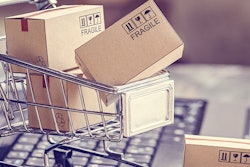Ensuring product integrity throughout the supply chain cannot be done without at least a little digitization. For the food and beverage industry in particular, delivering products to the highest quality standards should not be compromised. No matter where products are along the supply chain, knowing their status, where they came from and where they are going is imperative to consumer safety and operational efficiency.
One of the main challenges is encouraging all sectors within the food and beverage industry to adapt to this change. New food safety regulations, the rise in product recalls, technology trends, complex supply chains and consumer expectations have influenced the implementation of discrete asset tracking, also known as track-and-trace systems, into many supply chains. However, the uncertainty of change and relying on the Internet of Things (IoT) detracts some from taking the leap.
Traceability, Trackability Meet Multiple Operational Goals
Technology that can track a product’s location in the supply chain and connect its path from Point A to Point B is a simple way to define discrete asset tracking. Even though tracking a product back to its origin is the original reason for installing this technology, discrete asset tracking can do so much more. Technology, such as automatic identification and data capture, can actively help:
- Analyze labor inefficiencies to increase productivity
- Manage inventory levels to alert fulfillment needs or missing products
- Improve count precision to reduce human error and manual work
- Count goods in transit to track shipments per day
- Pinpoint theft and asset loss to save and improve return on investment (ROI)
- Track ingredients in the event of a recall
This data provides greater visibility into the inner workings of a supply chain, detecting ways to increase efficiency, improve accuracy and ensure accountability. The downfall is that not all food and beverage supply chains have discrete asset tracking capabilities, which prevent an all-inclusive look at a product’s path and position along the supply chain. This makes end-to-end supply chain traceability more difficult to achieve in an open-loop system, where multiple parties are relied on to gather and share data. A closed-loop supply chain has established supply chain partners that regularly collaborate on system logistics and efficiency opportunities for the greater good. If more warehouses and distribution centers would digitize, products could be fully traceable.
Begin With an Achievable Discrete Asset Tracking System
To come closer to achieving end-to-end traceability, companies can consider two of the most common, reliable discrete asset tracking technologies: radio frequency identification (RFID) and bar code.
RFID technology automatically tracks readily available information without a portable device. Data from unique items is transmitted between RFID tags and readers through radio frequency technology. They do not require visibility to be detected; however, nearby metal can disrupt RFID readability. RFID tags come in a variety of sizes, weights and materials.
Unlike RFID, bar code technology digitally collects information with the scan of a hand-held bar code reader. This technology is reliable and accurate, so data can be confidently and actively assessed. Bar codes need to be visible and accessible on the packaging, but this type of tracking is perfect for new discrete asset tracking users.
Both technologies are compatible with existing plastic packaging, which is a continuing trend in the food and beverage supply chain. The sanitary characteristics, cleanability, recyclability and safety of plastic packaging provide benefits not offered with wood, fiber corrugated and metal materials. For RFID technology, tags can be affixed anywhere on plastic packaging without fear of material interference. For bar code technology, a variety of plastic packaging offerings — including trays, bulk containers, pallets and distribution totes — are available with bar code holders or labels on all sides of the package for full and easy access.
To gain maximum efficiency, the implementation of RFID and bar codes can require a technology infrastructure, including readers, scanners and software supported by a sustainable process. These systems should be extremely scalable — companies that test a small program and grow from there tend to be more successful. So, when considering which discrete asset tracking technology is compatible with what type of supply chain, a complete understanding of the products and applications must be understood.
Have a Complete Understanding of the Supply Chain
Even though discrete asset tracking has been possible for years, traditional supply chains can be slower to adapt. A test, followed by a gradual implementation, is beneficial because highly informed and achievable change is more productive than installing the newest and most advanced technology prematurely. Making a large jump without having a good understanding of the possible challenges can have harmful ramifications in the long run. Discrete asset tracking is no different, and RFID and bar code technology are achievable for supply chains that have any level of technology experience.
Some supply chains in the food and beverage segments still manually track products when they arrive at the docks, recording information tray by tray. Time and labor to complete this process can significantly be reduced with RFID or bar code technology. Using these systems would allow for quicker unloading and gathering of valuable information, but a variety of situations need to be considered first. Because there are multiple RFID tag or bar code solutions, the type of application and products will determine which solution works best. Considerations, regardless of tracking solution, include:
- Extreme temperatures, like frozen foods
- Weather conditions, such as rain and snow
- Rough industrial environments
- Product and packaging size
- Radio frequency range
- Moisture levels
Effectively Implementing Track-and-Trace Systems
When done properly, deploying discrete asset tracking in a supply chain can be an easy process. With RFID, after tags are attached to the packaging, RFID readers are added along the conveyors and building entrances and exits. They can easily be added to existing conveyors or directly on machines that serve a different purpose, as long as the readers are in range of the RFID tags. Conveyors with RFID-ready solutions also are available. For bar code technology, handheld scanners need to be purchased and bar codes will need to be placed in appropriate areas. These few steps will help gather important intel, measure ROI and achieve end-to-end supply chain traceability.
Packaging manufacturers can assist with technology implementation and laying out a plan to compile ROI to effectively measure the value of such investments and the positive effects it has on multiple areas of the supply chain. Many factors may be considered, including the number of plants and portals, amount of turns and inventory quantity. Packaging manufacturers can provide the materials and expertise to their customers for comfortable and confident transition for first-time and veteran track-and-trace system users.






















